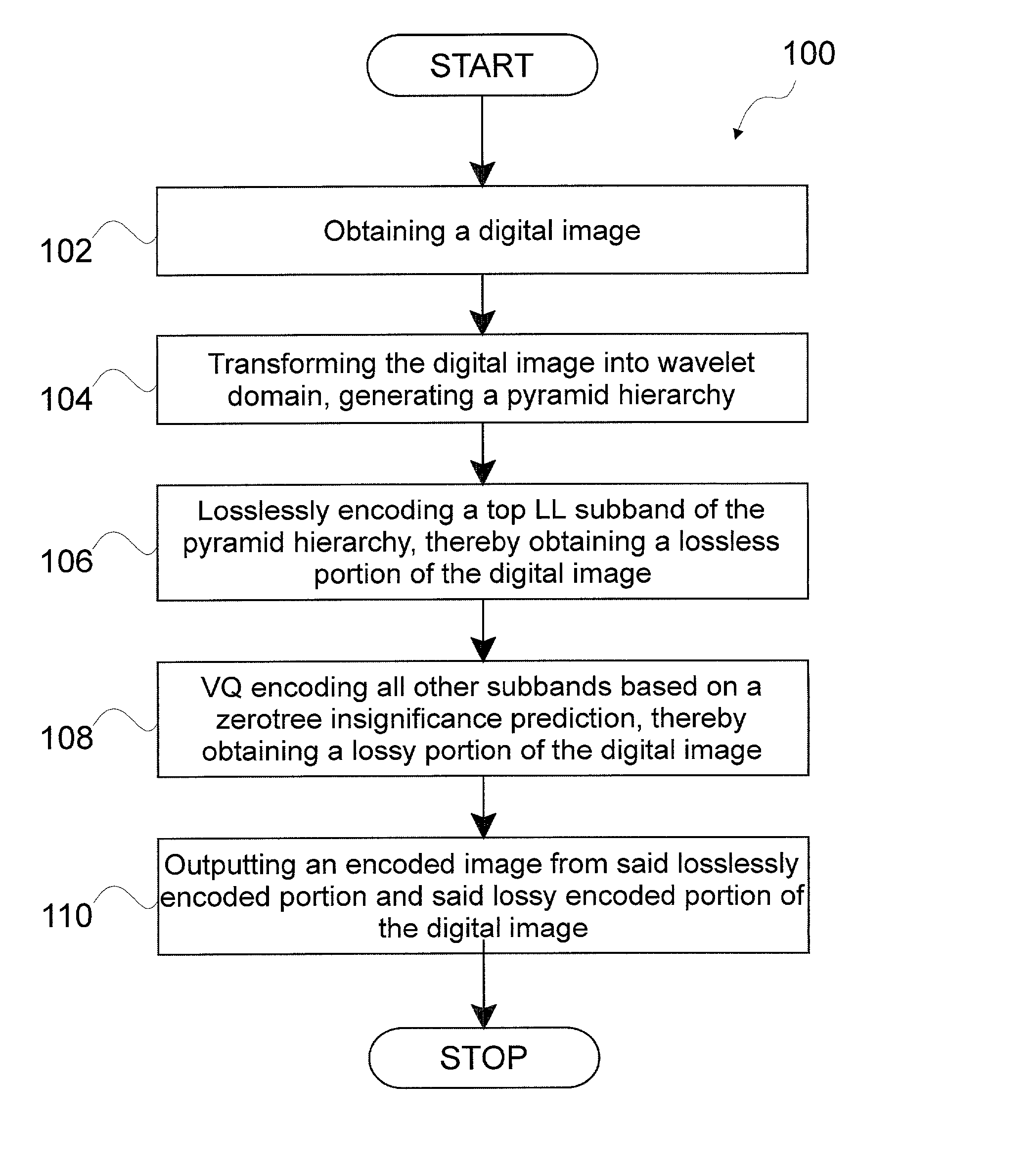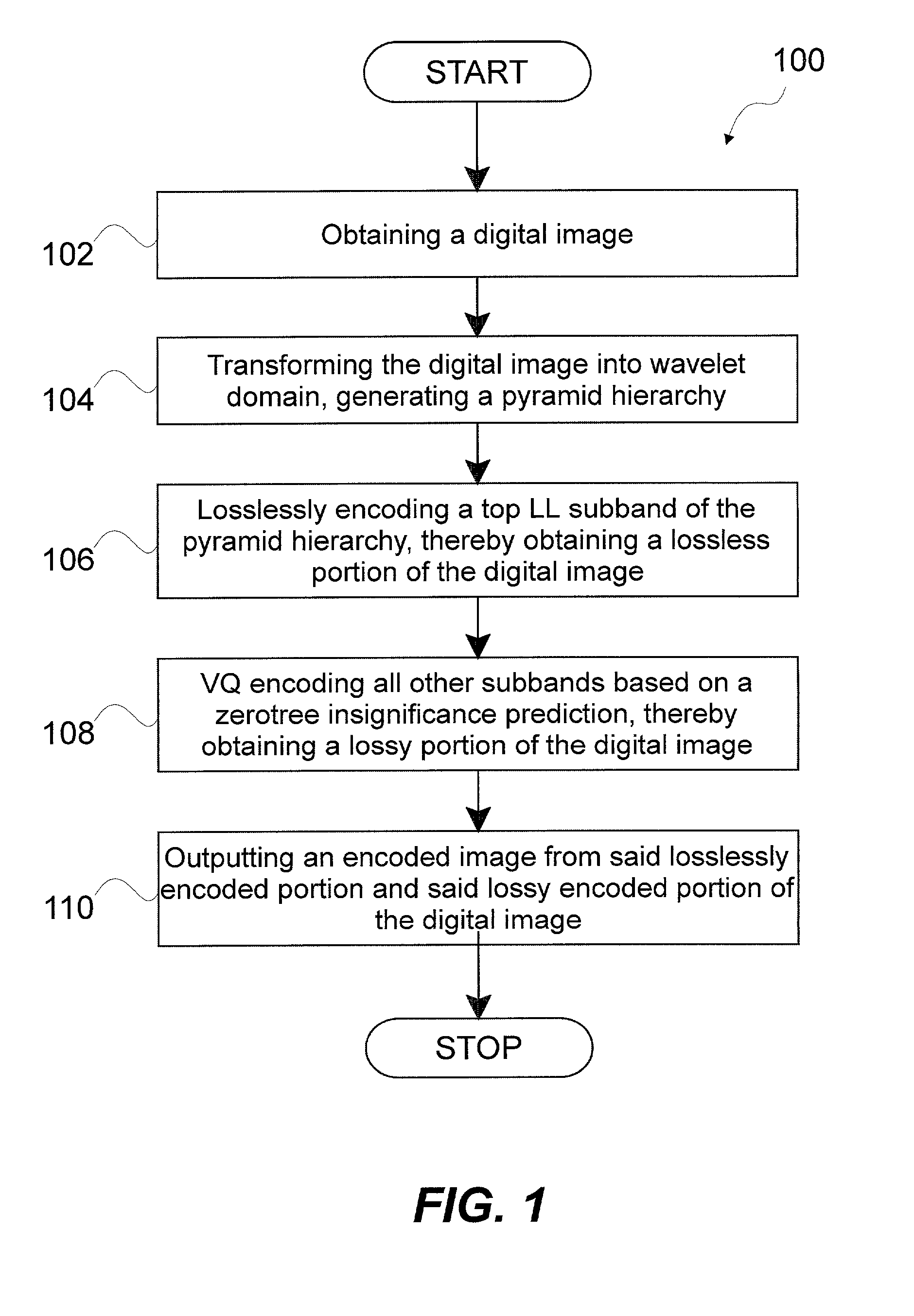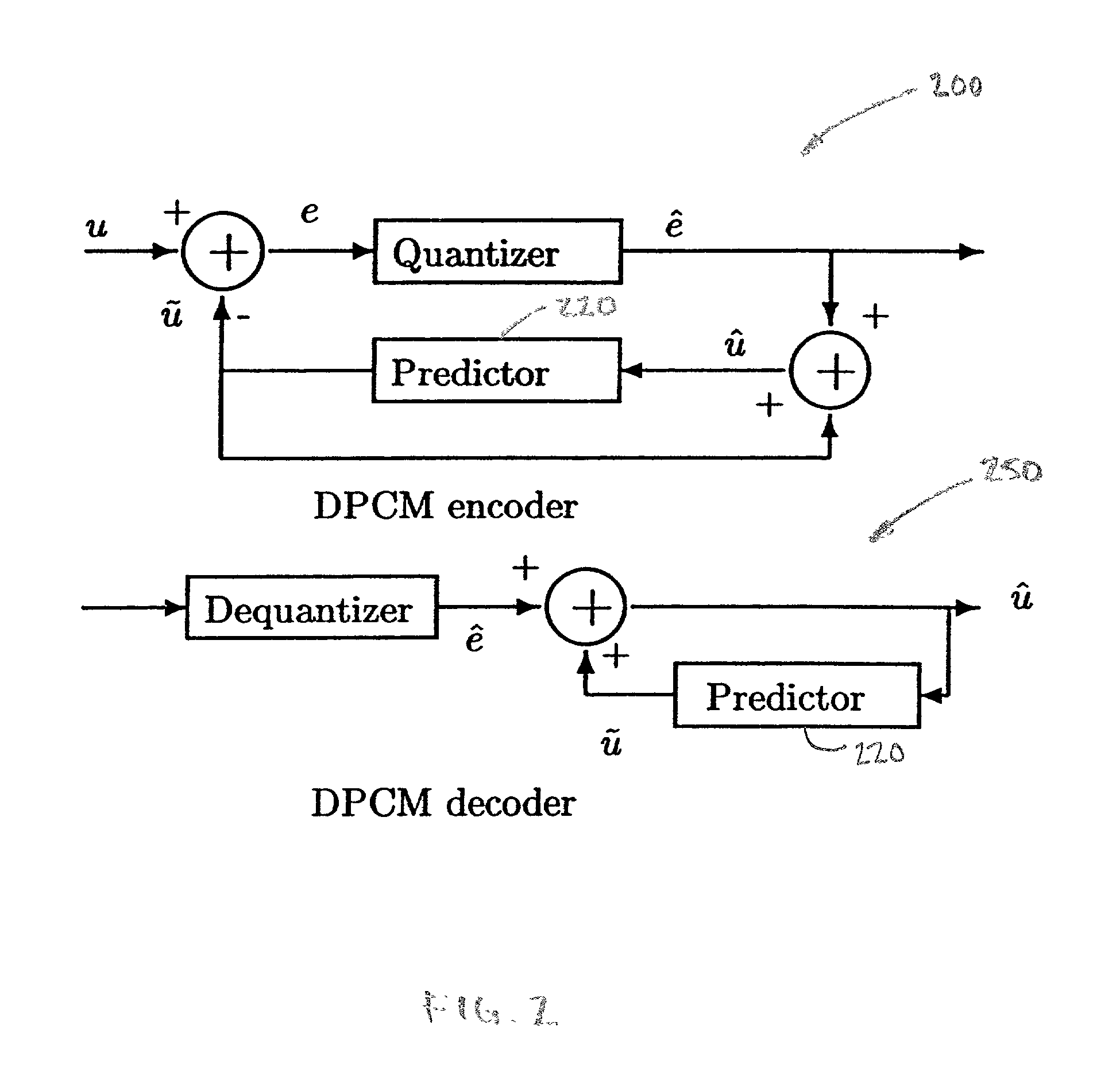Method for image coding by rate-distortion adaptive zerotree-based residual vector quantization and system for effecting same
a technology of residual vector and quantization method, applied in the field of image encoding by ratedistortion adaptive zerotree-based residual vector quantization and systems for effecting same, can solve the problems of not having analytical solutions for most wavelets and the cost of some image fidelity loss
- Summary
- Abstract
- Description
- Claims
- Application Information
AI Technical Summary
Benefits of technology
Problems solved by technology
Method used
Image
Examples
Embodiment Construction
[0034] The invention is a method for image coding by rate-distortion adaptive zerotree-based residual vector quantization and system for effecting same. While the method of the invention has many applications, the method of the invention is particularly useful for compressing images for transmission through a communication channel and then reconstructing the images at a remote location. The method of the invention uses a discrete integer wavelet transform using the lifting scheme. The terms "discrete integer wavelet transform", "discrete wavelet transform" and "DWT" are used interchangeably herein.
[0035] The wavelet bases of the method were selected based on the following considerations. First, perfect reconstruction is desirable for image coding, transmission and decoding. Second, since most images are smooth, it is desirable to use those mother wavelets with reasonably high vanishing moments. Additionally, the length of the finite impulse response (FIR) filters should be short so ...
PUM
 Login to View More
Login to View More Abstract
Description
Claims
Application Information
 Login to View More
Login to View More - R&D
- Intellectual Property
- Life Sciences
- Materials
- Tech Scout
- Unparalleled Data Quality
- Higher Quality Content
- 60% Fewer Hallucinations
Browse by: Latest US Patents, China's latest patents, Technical Efficacy Thesaurus, Application Domain, Technology Topic, Popular Technical Reports.
© 2025 PatSnap. All rights reserved.Legal|Privacy policy|Modern Slavery Act Transparency Statement|Sitemap|About US| Contact US: help@patsnap.com



